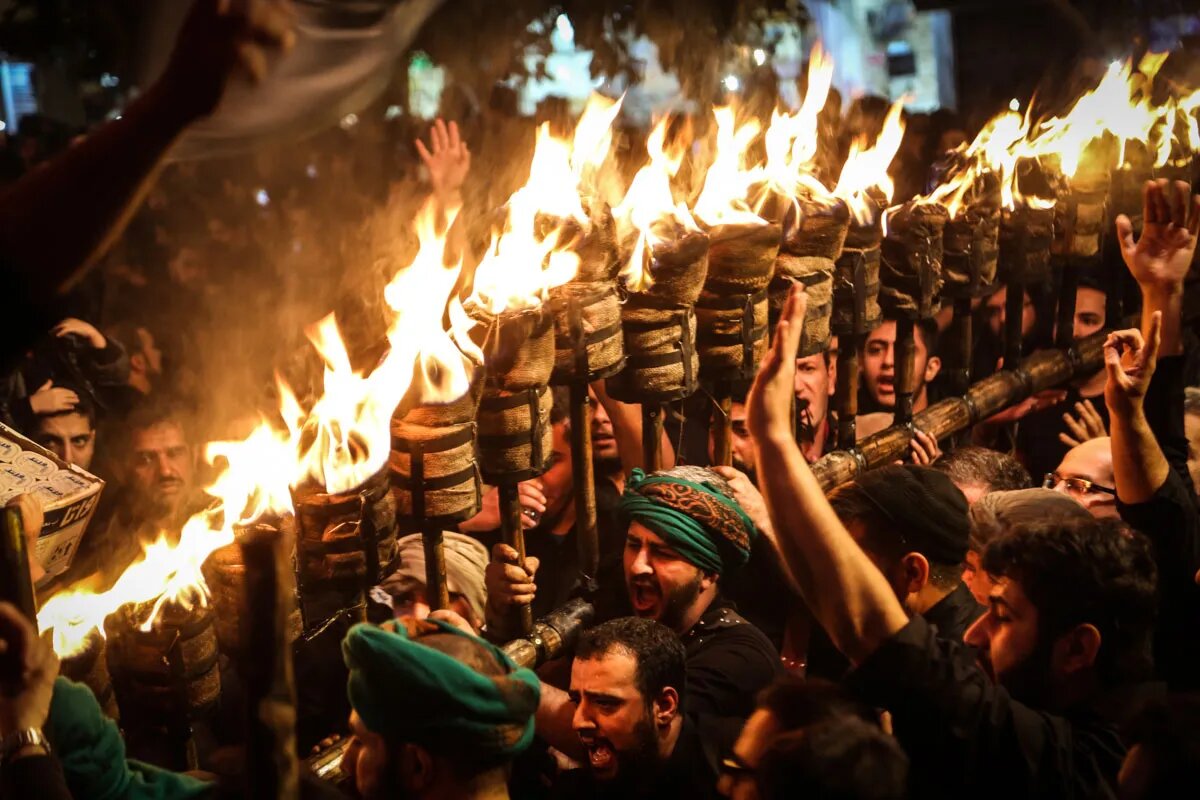Flames of faith: the enduring Muharram ritual of Mashal Gardani

TEHRAN - Mashal Gardani, or the “rolling of the torch,” is an annual religious event deeply embedded in the cultural and spiritual fabric of parts of Iran and Iraq. This profound ritual is one of the many shared heritages between the two nations, reflecting the enduring legacy of their historical and religious ties.
Every year, on the night of Tasoua, the ninth day of the Islamic lunar calendar’s first month, Muharram, millions of men dressed in black take to the streets and mosques in a powerful display of mourning for the death of Prophet Muhammad’s grandson, Imam Hussain (AS). The event reaches its zenith on the eve of Ashura, a day of immense significance for Shia Muslims worldwide.
The ritual, in which participants carry large torches, or Mashaal through the streets and sacred sites has been passed down through generations, not only honors the memory of Imam Hussain (AS) and his companions but also helps reaffirm values of faith, sacrifice, and unity among Shia Muslims.
Symbolically, the torches carried during Mashal Gardani represent the flames that engulfed the tents of Imam Hussain (AS) and his followers. The loud beating of drums serves as a haunting reminder of the sounds made during the attack by Yazid's and Ibn Ziyad's forces, aimed at drowning out the cries of the women and children.
These torches are often made from long, slender wooden poles with 20 to 40 smaller torches attached, each ignited using traditional methods with thick, woolen cloths soaked in black oil or diesel. Strong and tall individuals from the mourning groups bear the heavy torches on their shoulders, accompanied by others who help ensure the torch does not fall or cause harm.
The origins of Mashal Gardani are somewhat shrouded in mystery, with some tracing its roots back over 500 years. The practice was banned during certain periods, such as the reign of Reza Shah who was the first monarch of Pahlavi danasty, making its precise historical timeline difficult to ascertain. Nevertheless, its significance has endured, particularly in southern and central Iran, and in major cities of Iraq, such as Najaf, Kazemayn, and Karbala.
In Iran, Mashal Gardani is celebrated in various regions, including Qom, Shahr-e Rey, Ardakan as well as Tehran's Dowlatabad neighborhood, which is home to many Iraqi expatriates.
Each locality has its unique variations of the ritual. For example, In regions like Ardakan, Yazd, the torch-carrying ceremony marks the beginning of Muharram, inviting people to commence their mourning rituals. Elsewhere, such as in the villages of Khour and Mashal Gardani, is performed on the evening of Tasoua and the night of Ashura, with participants letting the torches burn out naturally as a sign of respect.
In the village of Barakuh, the ceremony involves creating iron belts shaped into cylinders, filled with cottonseed oil or kerosene-soaked wood, which are then ignited. This tradition, registered as intangible cultural heritage in Iran, continues to be highly respected, with some villagers even dedicating their agricultural lands to the maintenance of the Mashaals.
In Iraq's Najaf, small wooden or metal fire holders, known as Mashaal, are crafted and lit during the mourning processions, which traverse public squares and the precincts of holy sites. These Mashaals vary in size and shape, requiring significant physical strength to carry.
Despite its rich history and cultural significance, Mashal Gardani remains a largely regional observance. However, there are ongoing efforts to have this ritual recognized globally. Given its status as a shared intangible heritage of Iran and Iraq, there is a strong potential for Mashal Gardani to be registered as a UNESCO intangible heritage, highlighting the deep cultural and spiritual bonds between these neighboring countries.
AM
Leave a Comment